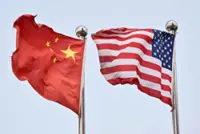The consensus among economists is for the bloc’s real gross domestic product (GDP) growth to hover around 1% in 2025. — Reuters
THE eurozone is showing early signs of an economic recovery that is unlikely to be derailed by the tariffs the Trump administration has threatened thus far.
But that doesn’t mean European policymakers can let their guard down. Many investors and economists believe the eurozone will continue to be stuck with low growth in 2025.
The consensus among economists is for the bloc’s real gross domestic product (GDP) growth to hover around 1% in 2025, only a little higher than the 0.7% achieved in 2024 and well below the United States’ expected 2% pace.
This assumes the region’s struggling manufacturing sector – the main drag on growth in 2024 – will continue to sputter due to high energy costs and a lack of demand, particularly from China. But this pessimism may be overdone.
The Early Cycle Indicator, Panmure Liberum’s proprietary indicator, has been showing early signs of an economic recovery in recent months.
This indicator has historically signalled shifts in GDP and earnings growth of European manufacturing companies about nine to twelve months in advance.
Importantly, the European economic powerhouses of Germany and France are showing tentative indications that growth is accelerating.
The main driver of this improvement is the recovery in new export orders in manufacturing purchasing managers’ index (PMI) surveys.
Export demand has become a key swing factor in eurozone growth, as exports amounted to 51% of GDP in 2023.
Other factors pointing in the right direction are stabilising inventory levels and improving investment intentions. Unfortunately, the manufacturing PMI surveys don’t tell us where this export demand is coming from.
Does it reflect recovering demand in China, accelerated orders from the United States in anticipation of tariffs or rising demand among European trading partners? Hence, we can’t definitely posit how sustainable this recovery will be.
Higher US demand would likely taper off once tariffs are implemented, while a sustained recovery in Chinese export demand could be a game changer.
But what we can say with some certainty is that Europe’s recovery is likely to be tested by rising global trade tensions, as the Trump administration ramps up its efforts to impose tariffs on the European Union (EU).
Curtailing growth
The United States runs a goods trade deficit of roughly €155bil with the bloc, according to the World Bank, making the EU a prime target.
The worry for investors is that these tariffs could reignite European inflation and curtail growth at this vulnerable stage in the region’s recovery.
But most of the tariffs put forward thus far should not have a significant direct impact on Europe.
The newly announced 25% tariffs on steel and aluminium imports to the United States certainly should not hurt much.
European exports of steel to the United States have averaged roughly €3bil over the last decade, and aluminium exports were similarly modest.
Together, they account for only around 2% of total goods exports from the EU to the United States, according to the World Bank.
While the European steel and aluminium industries will face declining export revenues if these tariffs are implemented, the eurozone overall will hardly feel the impact.
Similarly, Trump’s call for reciprocal tariffs should not be material for Europe in aggregate.
Reciprocal tariffs ensure charges on goods imported into the United States from a given country are set at the same rates that country assesses on imports of US goods.
The latest data from 2022 shows that the average tariff imposed on EU goods coming into the United States was 3.6%, while the average tariff rate on goods going in the opposite direction was 4.5%.
However, the concern grows markedly when zeroing in on individual products. European cars exported to the United States are subject to a 2.5% tariff, while US cars face a 10% charge in the EU.
And even though European car makers like Mercedes-Benz and BMW have US plants, the high-margin, high-end cars are built in Europe. The same is true for Porsche, which has no manufacturing sites in the United States.
Food and beverages manufacturers will also feel the pinch if Trump follows through, as they would face a four percentage point increase in US tariffs.
Tariff impacts
However, in the grand scheme of things, most of these tariffs will hardly register.
According to my models, levelling the tariffs between the EU and the United States will reduce EU GDP by only 0.02% and increase inflation by 0.01%. In other words, there should be virtually no impact at all.
So what type of tariffs could derail the European recovery? For that, Trump would need to follow through on his campaign promise to impose 20% blanket tariffs.
If this were applied to all EU goods, models indicate that GDP growth in the bloc could fall by 0.9 percentage points and inflation could rise by 0.2 percentage points. This would clearly change the economic outlook and likely push the EU back into recession.
Additionally, if Trump imposes significantly higher tariffs on China, EU manufacturers would likely suffer since the knock-on effects to the Chinese economy could cause Chinese export demand to decline.
For now, however, Trump’s tariff threats seem to be a lot of bark and with fairly little bite. — Reuters
Joachim Klement is an investment strategist at Panmure Liberum, the UK’s largest independent investment bank. The views expressed here are the writer’s own.





